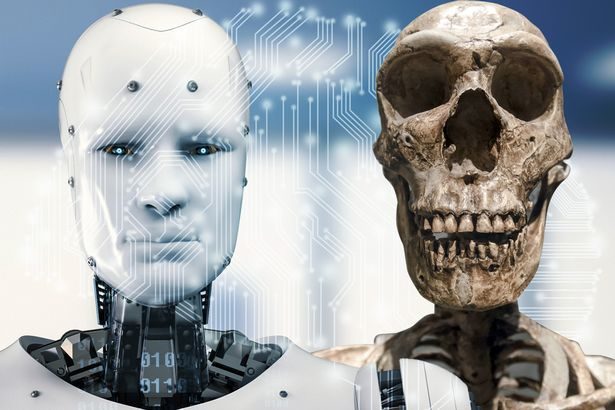Frankenstein is the timeless story of reanimating a dead body through the use of technology.
And now a team of researchers in the US seem to be walking in the footsteps of Mary Shelley's creation with a new experiment.
Teams at the University of California, San Diego (UCSD) are experimenting with lumps of tissue taken from fossil bones of our early ancestors
They've reportedly managed to grow tiny brains, about the size of a pea, in petri dishes inside labs.
They say the next step is to link these cavemen brains to robots using neural implants to try and create a kind of Neanderthal cyborg.
This, in turn, will allow them to find out what caused Neanderthals to go extinct - leaving homo sapiens to colonise the Earth.
Despite the fact the last Neanderthal walked the Earth over 40,000 years ago, modern scientists are still learning new things about them thanks to advances in technology.
It takes several months to grow the Neanderthal DNA-containing stem cells into these tiny brains called "organids". And, once finished, they come out in a strange "popcorn" shape compared to the spherical human organids.The team are planning to wire them up to crab-like robots to see how the two compare with each other."Ultimately, we want to compare the Neanderthalised organoid [with the robot] to test its ability to learn,"
said Alysson Muotri, a member of the research team at UCSD.
"By doing this systematically, we will learn what are the genetic alterations that made us uniquely human and why they were positively selected."
Gradually, it is believed that the Frankenstein crab robots will be able to learn their surroundings through the mini-brains that are controlling them.
Seeing how they learn differently will give clues about the differences.
"Neanderthals are fascinating because they shared Earth with us and there is now genetic evidence we actually bred with them," said Muotri.
A separate study in Japan has previously concluded that while early homo sapiens did not have larger brains than Neanderthals, they had very different brain structures - including a larger cerebellum.
Using data from 1,095 (human) participants, researchers from
Keio University examined the relationship between the size of the cerebellum and abilities such as language comprehension and production, and working memory.
Their findings suggest that the early Homo sapiens' brain structure meant they had better cognitive and social abilities than Neanderthals.
This may have improved early humans' ability to adapt to changing environments, increasing their chances of survival compared with the Neanderthals.

Reader Comments
neandathaals had bigger brains than homo sap.